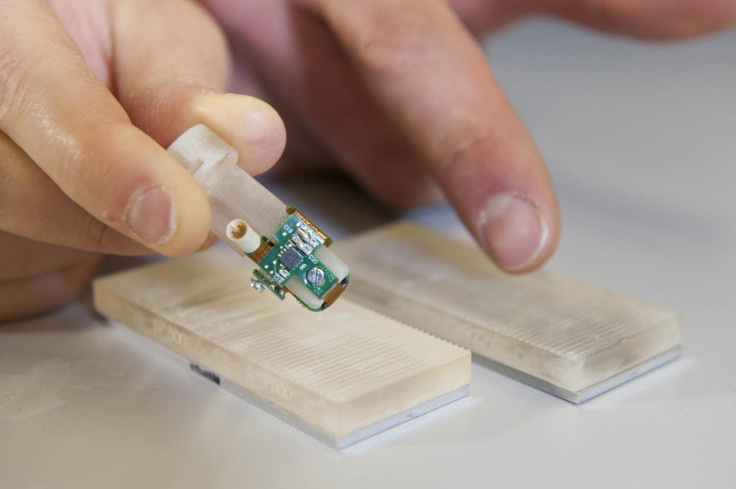Amputee Regains Sense Of Touch With Bionic Fingertip, Subsequently Feels Different Textures

A property developer in Denmark thought he lost his sense of touch for good after a fireworks accident forced doctors to amputate his left hand. Nine years later, in what is a scientific breakthrough, Dennis Aabo Sorenson can now feel different textures beneath his fingertips. Yesterday, a team of Swiss and Italian researchers were able to bring back Sorensen's ability to feel with a bionic fingertip — without surgery.
Sorenson’s sense of touch was restored with the help of a bionic finger. At 36, he is the first amputee to try the bionic fingertip that allows him to touch and feel different textures on his left hand.
"The stimulation felt almost like what I would feel with my hand," said Sørensen about the artificial fingertip connected to his stump of a wrist, in a statement. He added: "I still feel my missing hand, it is always clenched in a fist. I felt the texture sensations at the tip of the index finger of my phantom hand."
Researchers Silvestro Micera and his team at the École Polytechnique Fédérale de Lausanne in Switzerland created the silicon bionic finger using electromechanical sensors that gain sensory data from a surface. The electronic signals were then converted by computer into nerve signals simulated to function as those that occur when running a finger across different textures.
In the experiment, Sørensen’s arm was wired to an artificial fingertip equipped with sensors. Micera's team hooked the bionic finger up to a machine that moved it over different pieces of plastic engraved with smooth or rough textures. The fingers were also connected to electrodes that were implanted in the amputee’s upper arm.
When Sørensen’s finger moved, he experienced the sensation of texture where the index finger of his amputated arm had been. He could distinguish between surfaces 96 percent of the time.
“It was very close to the feeling in my real arm — you can feel coarseness and the different gaps and ridges,” he said.
Sorenson actually sensed textures better than four non-amputees on whom the same experiment was conducted. Researchers inserted a single electrode — like an acupuncture needle — into their upper arms. The non-amputees were able to distinguish roughness in textures 77 percent of the time. In addition, Micera’s team compared the brain-wave activity of the non-amputees, once with the artificial fingertip and then with their own finger, to assess how accurately it mimicked human touch. The brain waves collected by an EEG cap revealed the sensations indeed resemble those felt naturally by the human hand.
“The brainwaves were similar in both experiments,” said study author Calogero Oddo, from the Biorobotics Institute in Pisa, Italy.
A similar 2014 study gave amputees the sense of touch and pressure. Two amputees had electrodes implanted into their upper arms, which allowed them to generate unique impulses to sense fine touch, firm touch, and pressure. The amputees were able to complete difficult routine tasks, such as plucking the stem from a cherry when they could feel. Moreover, they claimed the implant eliminated the feeling of a "phantom hand," or pain, because the brain interpreted the hand still being there. This technology could be available within five to 10 years.
Meanwhile, the development of the bionic finger holds promise for allowing amputees to feel fine textures. Micera and his colleagues are now working toward allowing amputees to feel natural stimuli, such as jeans.
The idea is to eventually combine the fingertip sensors within a full prosthesis that would allow amputees worldwide to grip and feel objects, with no surgery required.
Source: Oddo CM, Raspopovic S, Artoni F et al. Intraneural stimulation elicits discrimination of textural features by artificial fingertip in intact and amputee humans. eLIFE. 2016.



























